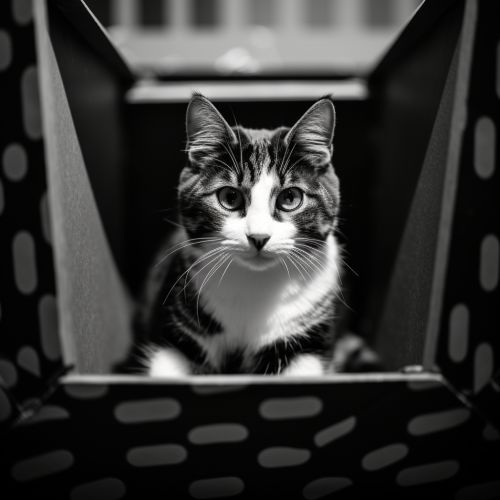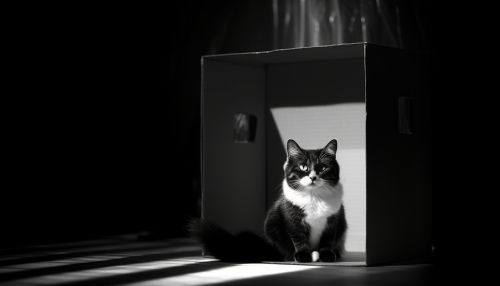Schrodinger's Cat
Introduction
Schrodinger's Cat is a thought experiment, often described as a paradox, devised by Austrian physicist Erwin Schrödinger in 1935. It illustrates what he saw as the problem of the Copenhagen interpretation of quantum mechanics applied to everyday objects. The scenario presents a cat that may be simultaneously both alive and dead, a state known as a quantum superposition, as a result of being linked to a random subatomic event that may or may not occur.


Background
The thought experiment is also often featured in theoretical discussions of the interpretations of quantum mechanics. Schrödinger coined the term Verschränkung (entanglement) in the course of developing the thought experiment.
Description
Schrödinger's cat: a cat, a flask of poison, and a radioactive source are placed in a sealed box. If an internal monitor (e.g. Geiger counter) detects radioactivity (i.e. a single atom decaying), the flask is shattered, releasing the poison, which kills the cat. The Copenhagen interpretation of quantum mechanics implies that after a while, the cat is simultaneously alive and dead. Yet, when we look in the box, we see the cat either alive or dead, not both alive and dead.
Interpretations
This thought experiment was a critique of the Copenhagen interpretation which states that a quantum particle exists in many states until observed. The act of measurement or observation determines the state of the particle. Schrödinger disagreed with this interpretation.
Copenhagen interpretation
The Copenhagen interpretation is the "standard" interpretation of quantum mechanics formulated by Niels Bohr and Werner Heisenberg while they were in Copenhagen. According to the Copenhagen interpretation, physical systems generally do not have definite properties prior to being measured, and quantum mechanics can only predict the probabilities that measurements will produce certain results.
Many-worlds interpretation
The many-worlds interpretation, formulated in 1956, holds that all the possibilities described by quantum theory simultaneously occur in a "multiverse" composed of mostly independent parallel universes. This is not accomplished by introducing some new axiom to quantum mechanics, but on the contrary by removing the axiom of the collapse of the wave packet.
Ensemble interpretation
The ensemble interpretation, also known as the statistical interpretation, considers the wave function of a system to provide the probabilities that measurements will yield certain results. The ensemble interpretation was first proposed by Leslie E. Ballentine in 1970.
Schrödinger's Cat in Popular Culture
Schrödinger's cat has been a topic of interest in popular culture, often used as a metaphor for situations where something can be in two states at once, depending on how you look at it.
See Also
Quantum mechanics Copenhagen interpretation Many-worlds interpretation Ensemble interpretation
